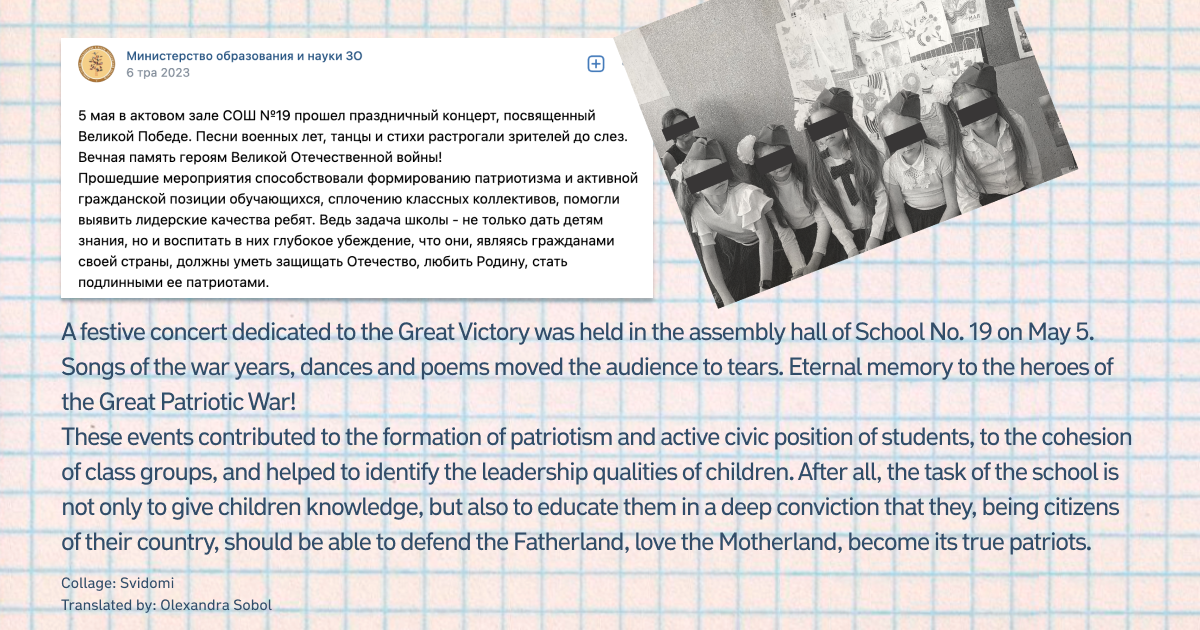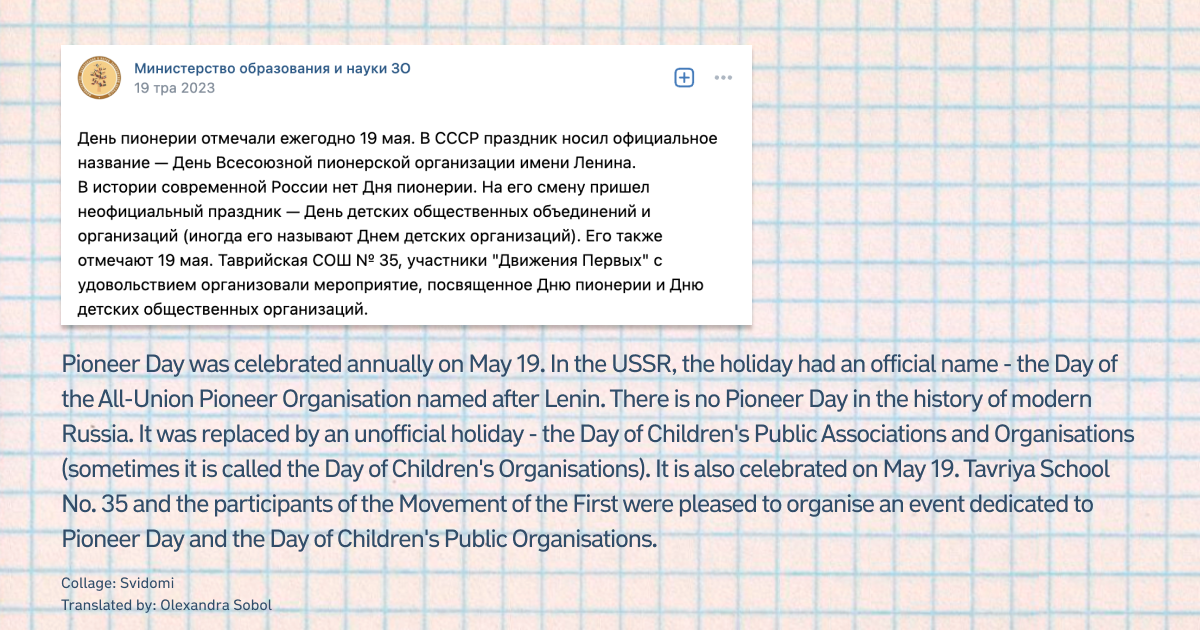Ten classes under occupation. Education in the temporarily occupied territories since 2014
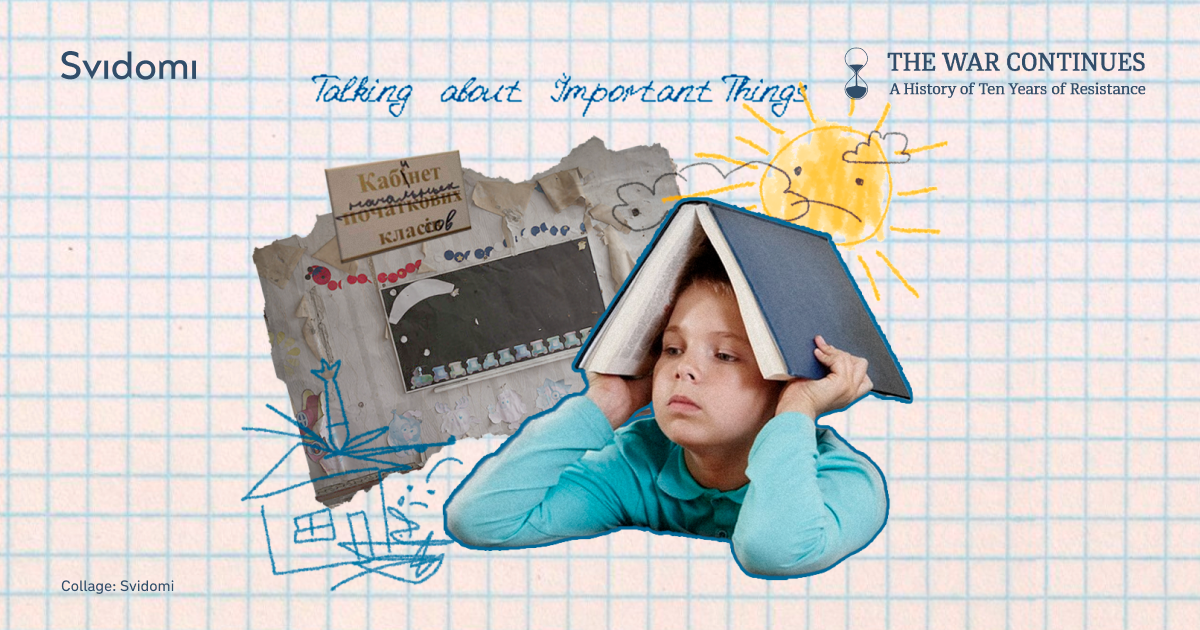
After the temporary occupation of Ukrainian cities in 2014 and 2022, Russians have been actively introducing their education and imposing Russian ideology in educational institutions. They talk about Russia's 'greatness' in the world, force students to wear St George's ribbons (a symbol of the Russian Empire and the USSR - ed.) and record videos thanking Russian soldiers involved in the war against Ukraine.
Read the article to find out how the Russians have been implementing propaganda narratives in the occupied schools for ten years, managing students' extracurricular activities, and constantly increasing militarisation.
This article was published as part of the special project 'The War Continues: A History of Ten Years of Resistance'.
Implementation of the 'Crimean scenario'
After the occupation of Crimea (Qırım) and eastern Ukraine in 2014, the Russians began to destroy Ukrainian education in an attempt to destroy Ukrainian identity. In May 2014, Russian President Vladimir Putin signed a law on integrating Crimea into the Russian educational space.
Primary, secondary, vocational and higher education were to adopt Russian standards, all Crimean teachers were to undergo retraining, and every student in the Temporary Occupied Territories (TOT) was to be provided with Russian textbooks. As early as September 1, 2014, schools started implementing Russian curricula.
The situation in the occupied parts of the Donetsk and Luhansk regions was similar to that in Crimea but with some differences. Crimea immediately became part of the Russian Federation, and throughout the ten years of occupation, the Russian leadership has stressed that the peninsula belongs to the Russians.
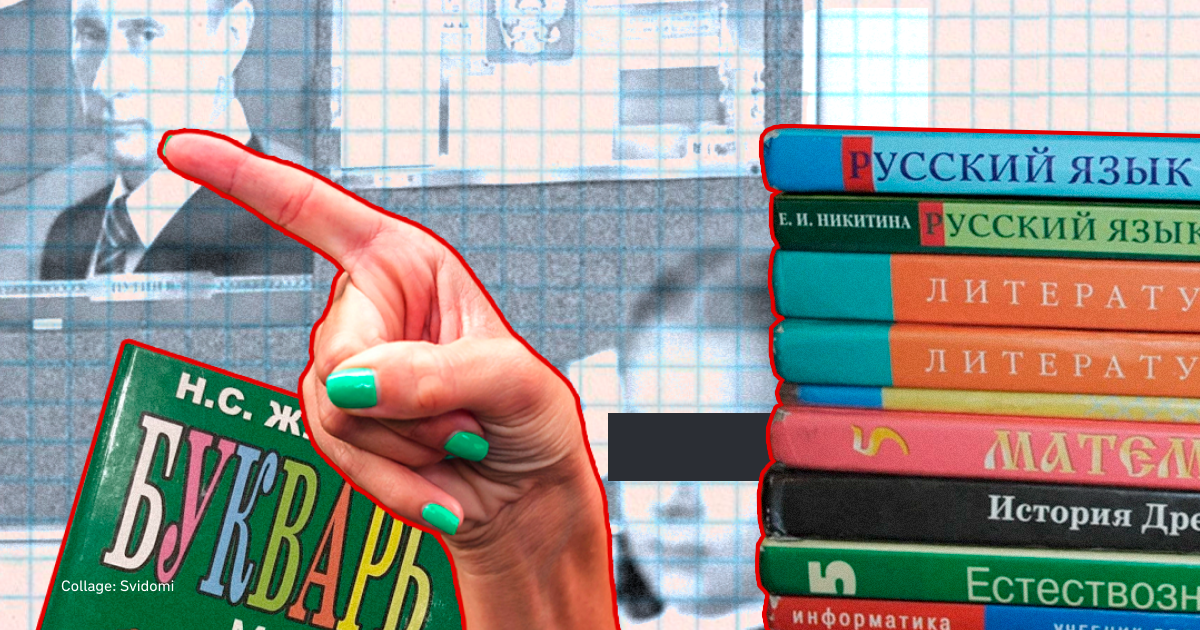
The situation in eastern Ukraine was different. Until 2022, Russia denied any influence on the leadership of the illegal armed groups of the 'Luhansk and Donetsk People's Republics'. Here, the change in education was implemented gradually and not immediately with a focus on Russia, but with an emphasis on independence, which was different from the 'Crimean scenario'.
In June 2022, after the start of the full-scale invasion, the Russians began a campaign to prepare for the 2022-2023 school year in the new temporarily occupied regions under the 'Crimean scenario'.
The 'Crimean scenario' for the destruction of education includes
- complete transition to Russian education standards;
- replacement of educational materials with Russian ones;
- replacement of teaching staff with those 'loyal' to the new government;
- absence of teaching of Ukrainian Studies subjects, such as the History of Ukraine, Ukrainian Language and Literature;
- militarisation of the educational process (cadet schools, the youth National Military Patriotic Social Movement Association 'Yunarmiya').
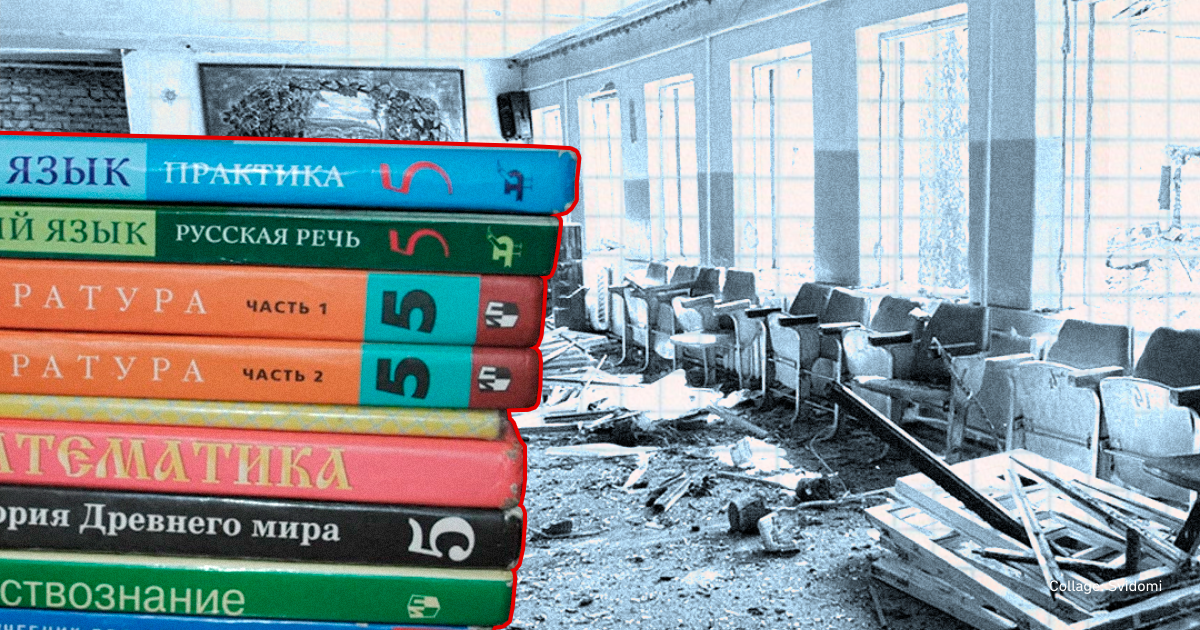
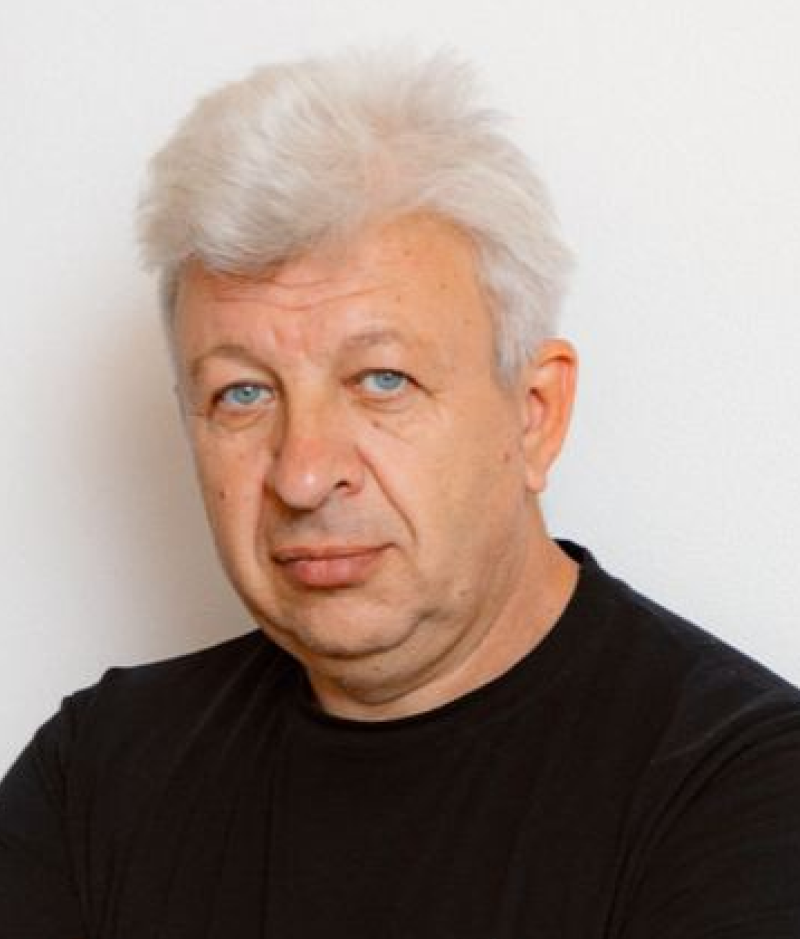
In Crimea, they [the Russians] took eight years to reform education gradually. In the newly occupied territories (after 2022 – ed.), they changed everything immediately, following the 'Crimean scenario'. First of all, the Russians are destroying Ukrainian libraries, books and other manifestations of Ukrainianness,
says Oleh Okhredko, coordinator of educational programmes, expert and analyst at Almenda, the Centre of Civil Education.
The retraining of teachers to Russian standards has also begun. Those who refused to go over to the side of the Russian Federation faced repression — they were detained in prisons, taken out of the city and threatened, says the analyst.
On August 31, the Russians announced that all schools in the temporarily occupied territories would switch to Russian educational standards. They delivered 600,000 textbooks to the schools.
The educational process, school subjects and militarisation
After the full-scale invasion, education in the TOT changed, including increased attention to the militarisation of children. Assistant principals have been introduced in schools. They are supposed to be responsible for the youth movement, militarisation and Russian propaganda in schools, says Oleh Okhredko.
After implementing the education system, Russians offered parents ten thousand rubles for enrolling their children in a Russian school. Currently, they give four thousand rubles a month for attending it.
Part of the Russian educational curriculum is a course called Talking about Important Things, which discusses the so-called patriotic education of schoolchildren. The course has been actively implemented in the occupied territories. At one such lesson in a school in Skadovsk, Kherson region (in the south of Ukraine, about 100 kilometres from the Kakhovka HPP, which was blown up by Russians – ed.), called Russia in the World, children were told about "the importance of Russia, the significance of Russian science, culture, technology and Russia's contribution to the fight against Nazism and colonialism".
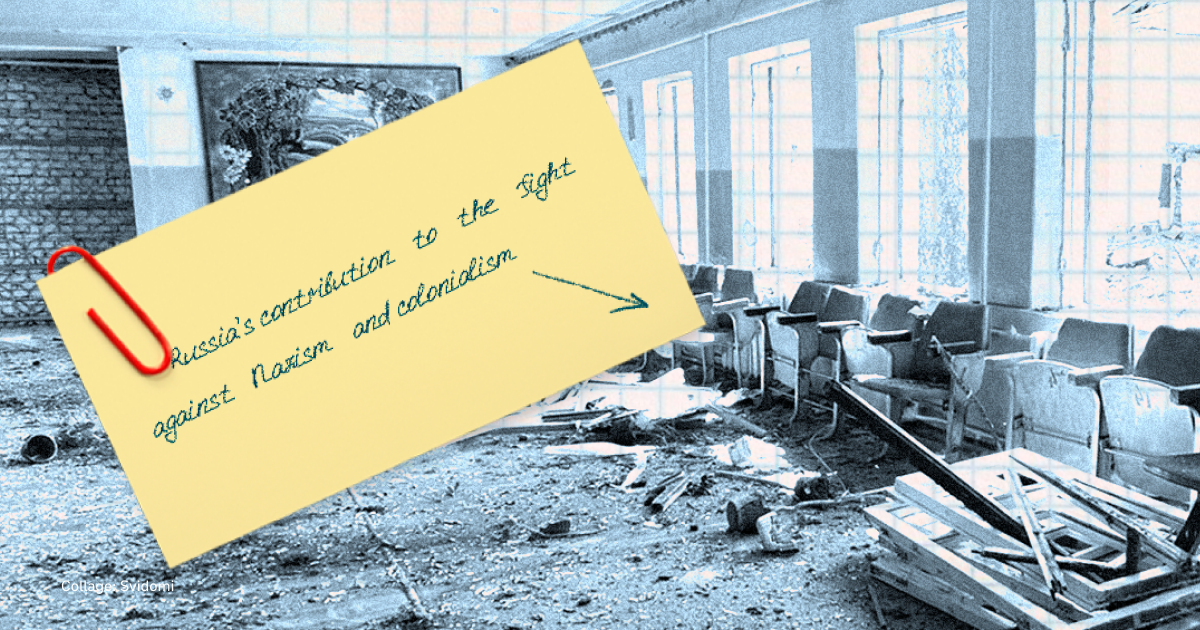
"Such lessons are held every week. Previously, parents could keep their children from attending, but today it is compulsory," says Oleh Okhredko.
Among the compulsory subjects is Career Guidance, where they study the so-called Life Safety. However, instead of learning about first aid, children learn how to use weapons. In particular, Russians plan to introduce compulsory military courses or summer camps for tenth-grade boys.
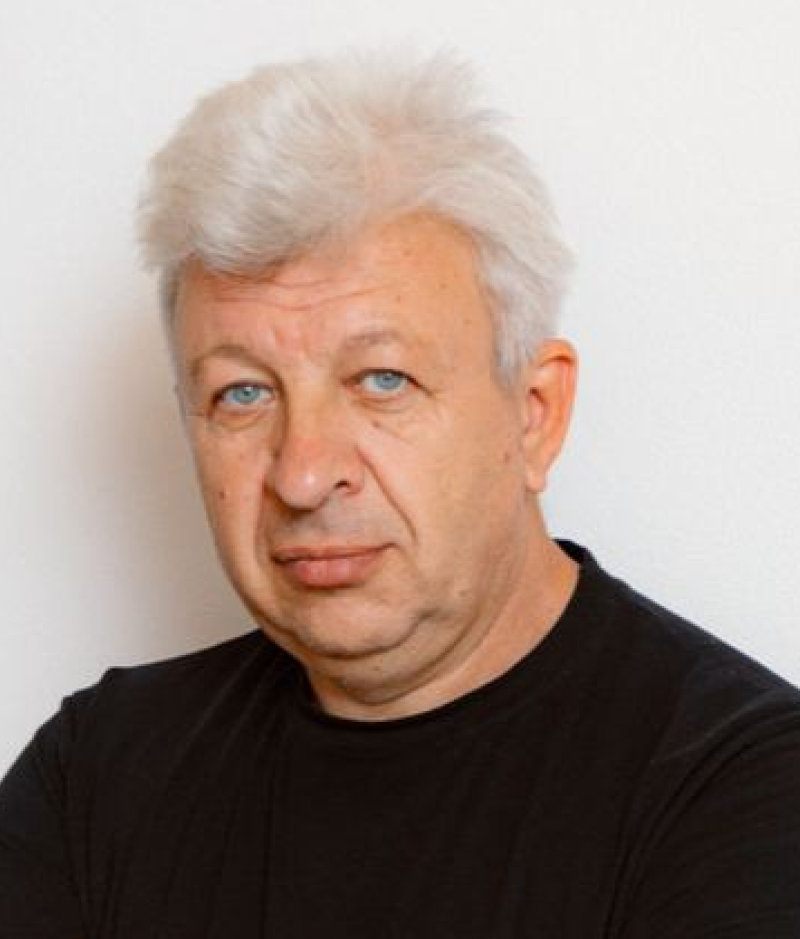
It used to be voluntary within the Yunarmiya, but now it is compulsory. Ten-day courses have already been held in Crimea, where students lived in tents and received military training,
explains analyst Okhredko.
After 2022, veterans of the Russian-Ukrainian war will be invited to teach military training, physical education, etc., in the occupied schools. According to the analyst, not all of them have teaching qualifications.
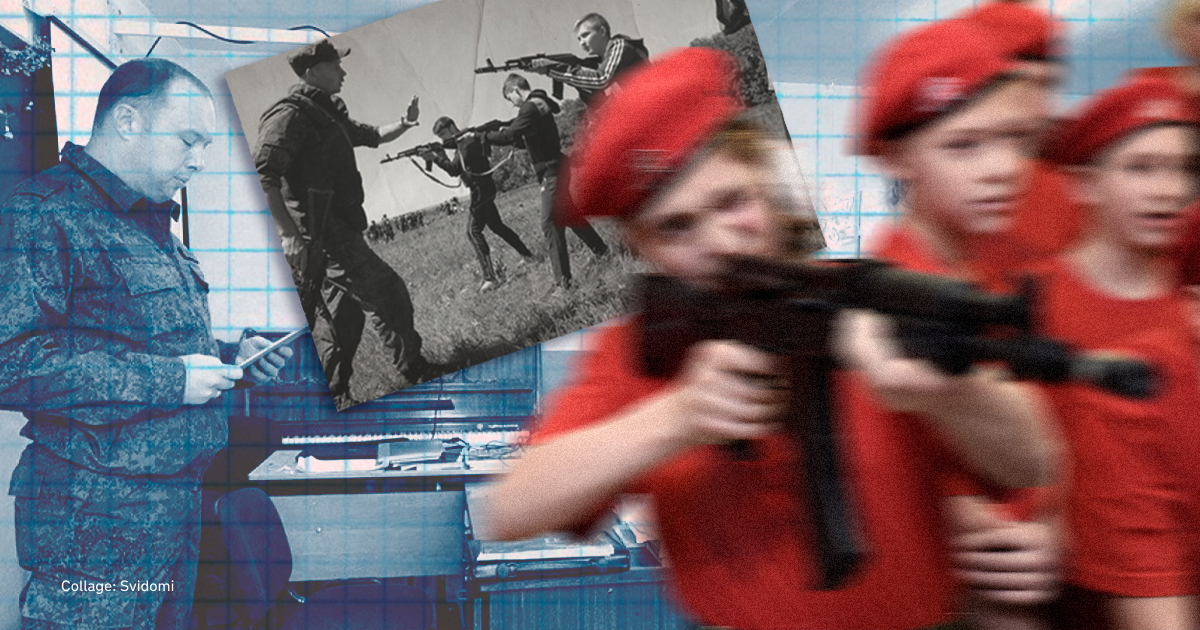
Textbooks contain messages about the need to be ready to defend the interests of the Russian Federation with arms, the idea of self-sacrifice for the motherland as a logical consequence of belonging to the Russian people, and patriotic education.
In the minds of Ukrainian children, Russians try to instil a vision of the Russian Federation as their homeland. For example, in The World Around Us class, the students study the following topics: Russia is our Motherland, Our Country is Russia, We are Russians.
Russia has published the Alphabet of Kherson with the Russian flag on the cover to promote' patriotic education'. The book was designed similarly to the Alphabet of Donbas, with the flag of the illegal armed group 'DPR' on the cover and images of the Kremlin throughout the book.
In 2023, the Russian Federation published an updated Russian History textbook for grades 10-11. Denying the existence of Ukraine, inciting hatred between peoples, supporting the Russian-Ukrainian war and preparing children to fight 'Nazism' are just some of the things students are expected to learn in schools.
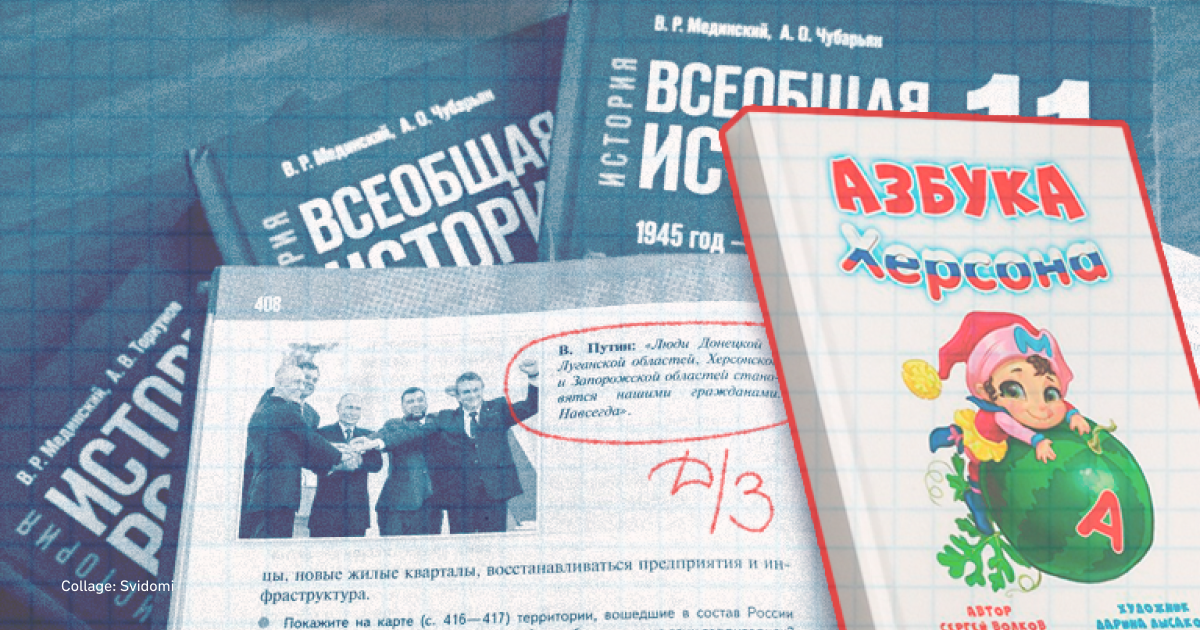
Extracurricular activities and youth movements
In 2014, after the occupation of Crimea, Russians created two major youth organisations: the Russian Schoolchildren Movement (RSM) in 2015 and the Yunarmiya in 2016.
The Russian Ministry of Defence uses the Yunarmiya children's organisation to impose propaganda on minors and prepare them for war. The Russians organise events to spread the word about the Yunarmiya movement and encourage people to join it.
In 2022, after the full-scale invasion, the RSM merged into the Movement of the First (a prototype of the new pioneering movement that operated during the Soviet era – ed.), and Yunarmiya is part of a network of organisations that oversee the Movement of the First.
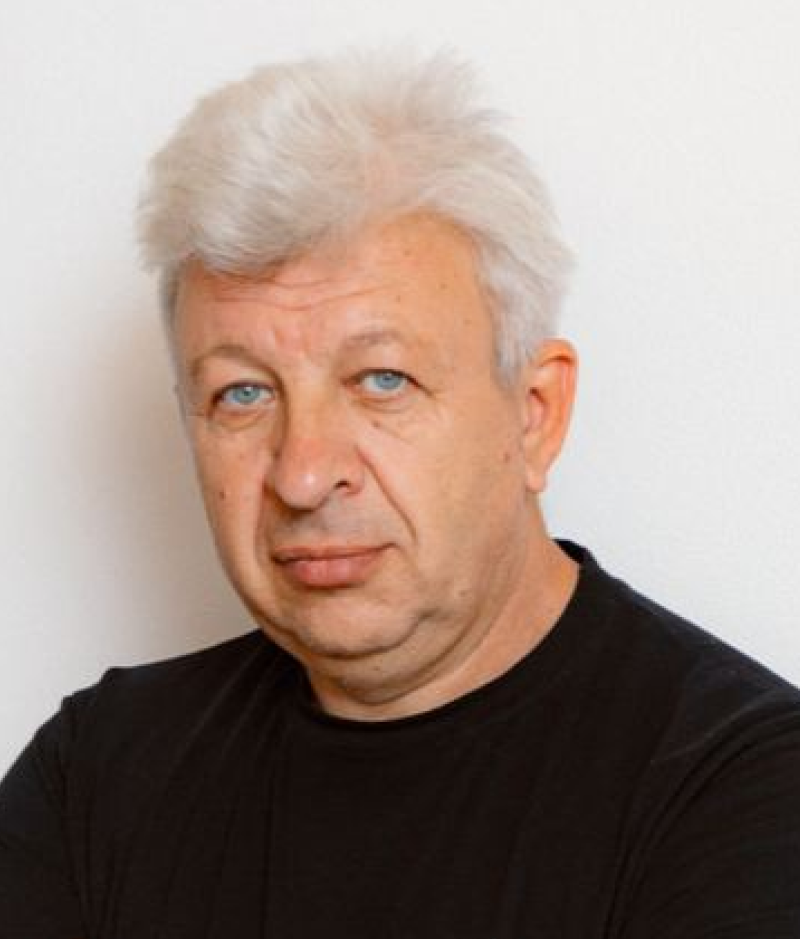
Yunarmiya may be voluntary, but children are enrolled in the Movement of the First by force. The number of participants is constantly growing,
says Okhredko.
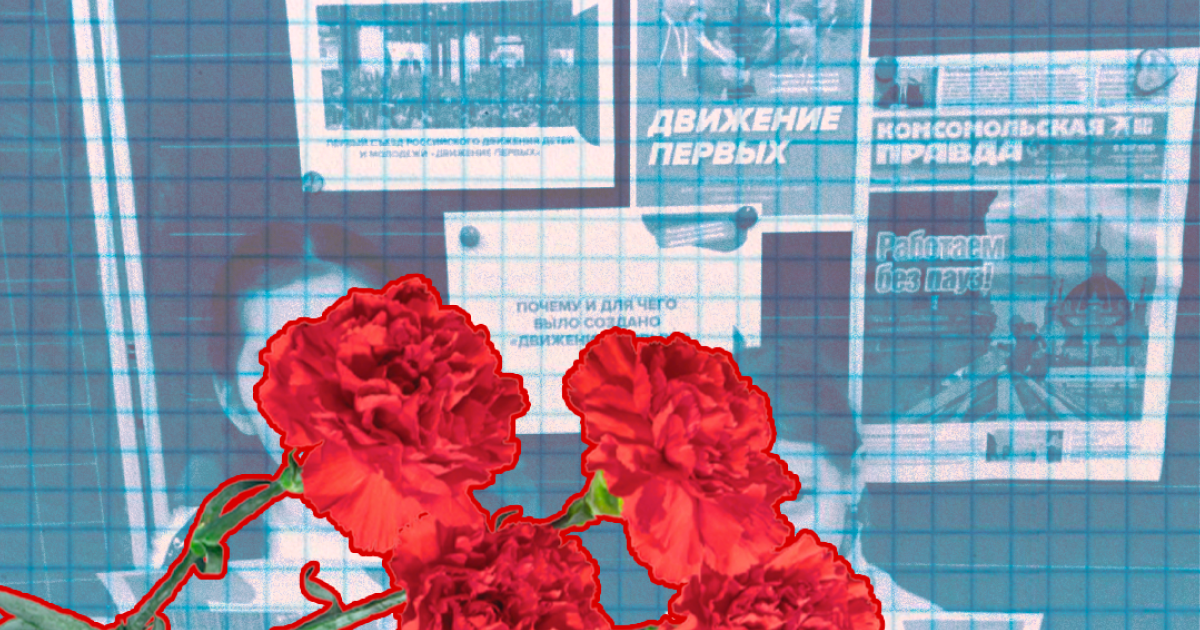
In November 2022, the Russians also set up branches of the Yunarmiya in the temporarily occupied Kherson and Zaporizhzhia regions. Also, after the full-scale invasion of the TOT, they created the pseudo-public movement YugMolodoy, which spreads Russian propaganda exclusively in the occupied areas of the south of Ukraine. As of 2023, the organisation has 17 branches and seven thousand members.
The largest children's and youth organisation in the TOT is the Movement of the First. As of December 2023, it had about 4.5 million members.
Russia sees itself as a successor state to the USSR and is actively reviving the traditions of the Communist era. For example, on May 4, 2023, at Kostiantynivka School No. 3, Zaporizhzhia region, all students, teachers and other school staff wore St George's ribbons.
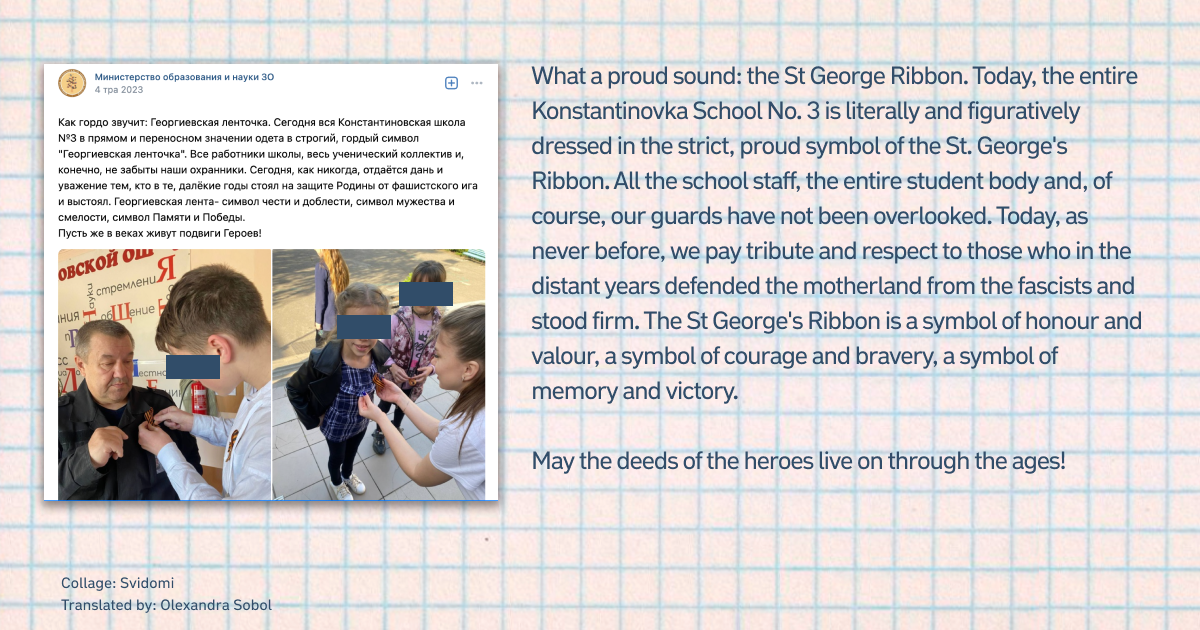
On the so-called Victory Day, the Russians hold separate events for schoolchildren where they sing war songs. The occupation authorities note that such events 'promote patriotic education and love of the Motherland'.
In schools, the Russians promote the idea of celebrating Pioneer Day (a movement of children's communist organisations in the USSR – ed.). Pupils are taught how to tie red ties, sing pioneer songs, and learn the history of pioneer organisations.
There are open lessons called Heroes of Our Time, where children prepare "letters and videos of gratitude to the Russian military" fighting against Ukraine. In one of these videos from the temporarily occupied Zaporizhzhia region, a girl calls for "not to feel sorry for the insidious Kyiv authorities".
Schoolchildren take pictures in front of the Heroes of the Special Operation stand. About a hundred memorial plaques with school graduates who died in the Russian-Ukrainian war have appeared in educational institutions, said Oleh Okhredko.
Propaganda narratives are also spread in kindergartens. For example, on Russia Day in the temporarily occupied Kherson region, Russians held a holiday for children themed My Russia.
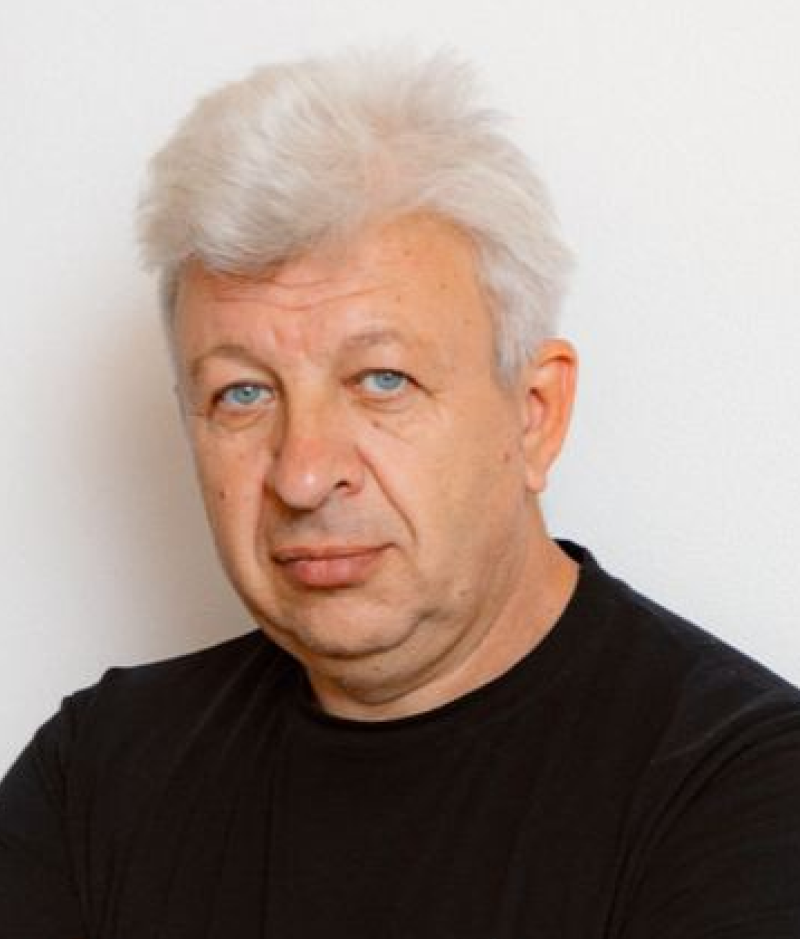
The Russians are also planning to set up youth organisations in preschools that will be aimed at militarisation,
said Oleh Okhredko.
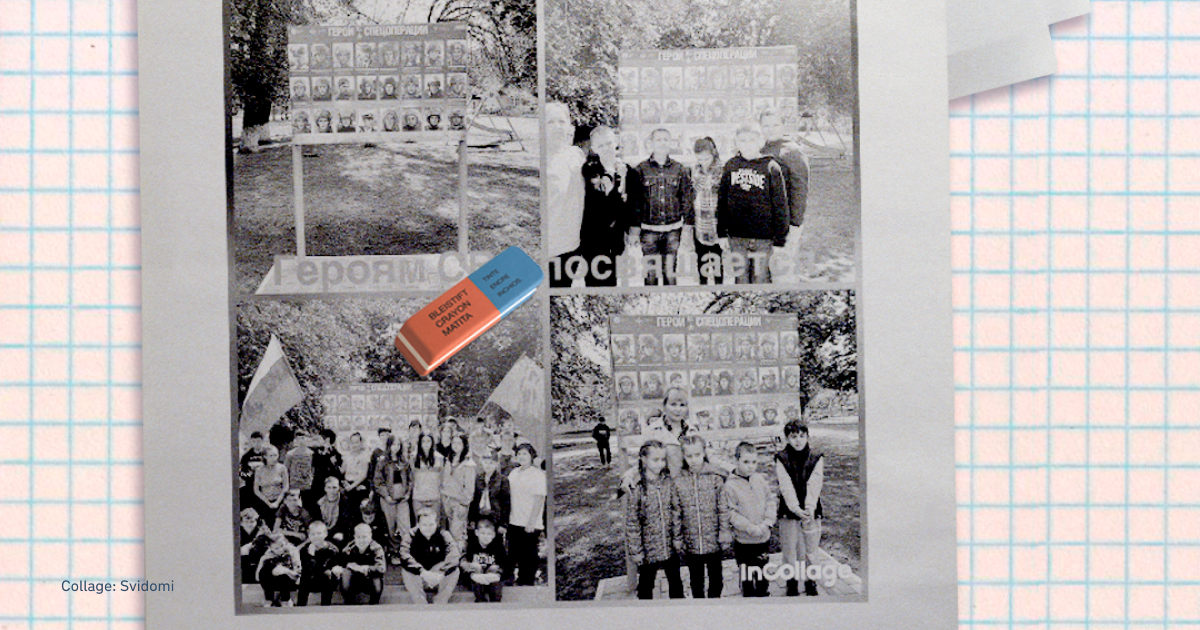
So-called recreation
Under the pretext of 'rehabilitation', the occupation authorities deport children from children's institutions, send them to camps and try to 're-educate' them in the territory of the Russian Federation or the temporarily occupied Crimea.
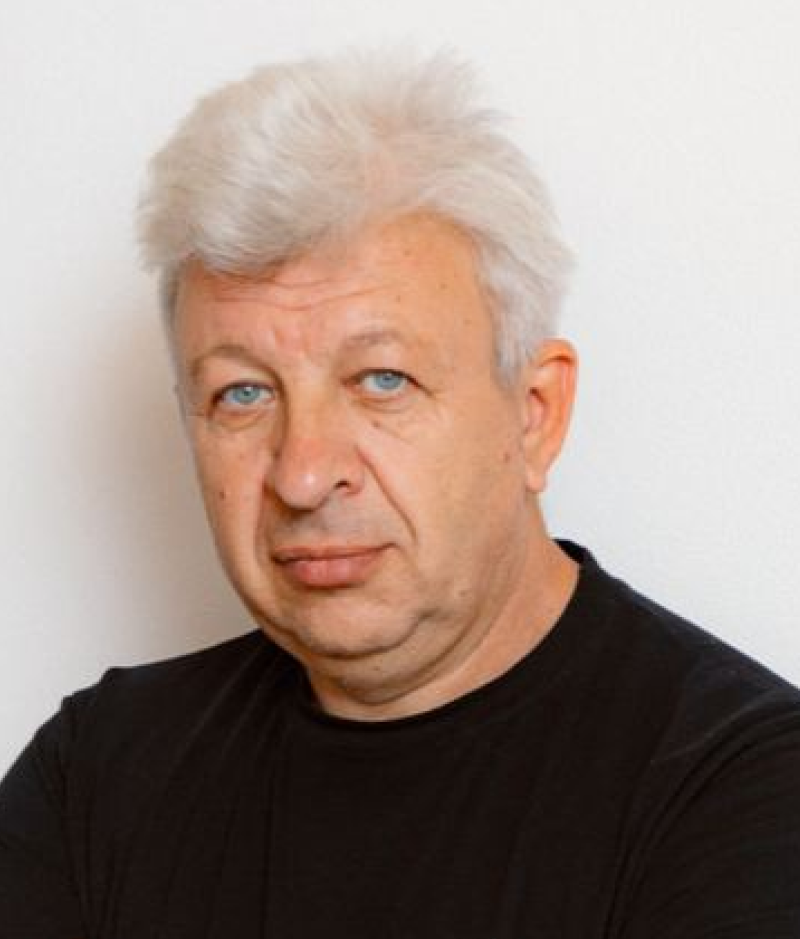
All the so-called holidays run mostly in a militaristic direction,
says analyst Okhredko.
On October 15, 2022, the Russians began taking children from the temporarily occupied Enerhodar to the Krasnodar Krai in the Russian Federation. At that time, parents of the children who were taken away received notifications about a 'delay' in their children's return from 'rest'.
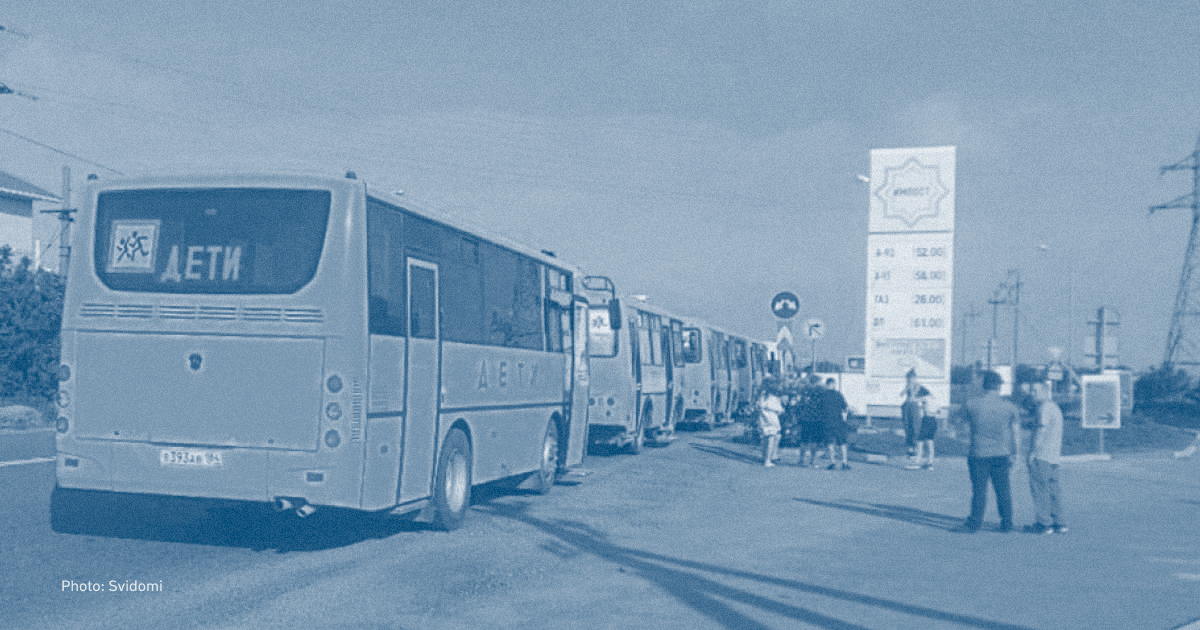
Since the beginning of the full-scale invasion, the Russian government has coordinated the illegal transfer of at least 6,000 Ukrainian children to the temporarily occupied Crimea and Russia. The children were placed in special camps, according to the Ukraine Conflict Observatory (an American non-governmental organisation which analyses and publicises evidence of Russian war crimes and other atrocities in the Russian invasion of Ukraine).
Among the places where Ukrainian children end up are seven summer camps in the temporarily occupied Crimea and ten near Moscow, Kazan, and Yekaterinburg in Russia. Another 11 were found 800 km from the Ukrainian border. The farthest point where children are sent is the Magadan region in the Russian Far East. One of the camps where children are held is a psychiatric hospital.
Numerous Russian-approved camps are advertised as 'integration programmes' with the apparent aim of integrating children from Ukraine into the Russian government's vision of national culture, history and society,
the Conflict Observatory reported.
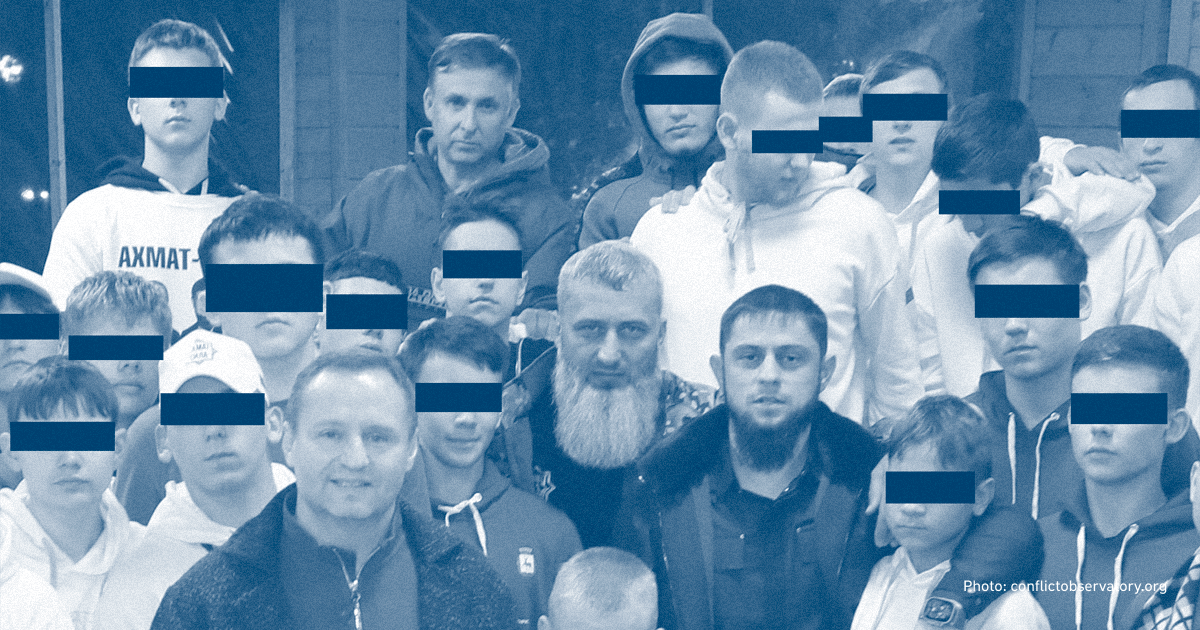
What about school leavers from the temporarily occupied territories?
In 2022, the Russians published information for applicants from the temporarily occupied Zaporizhzhia region that they could enter educational institutions without the USE (Unified State Exam, the Russian version of the External Independent Evaluation in Ukraine – ed.), but only after an interview and internal tests.
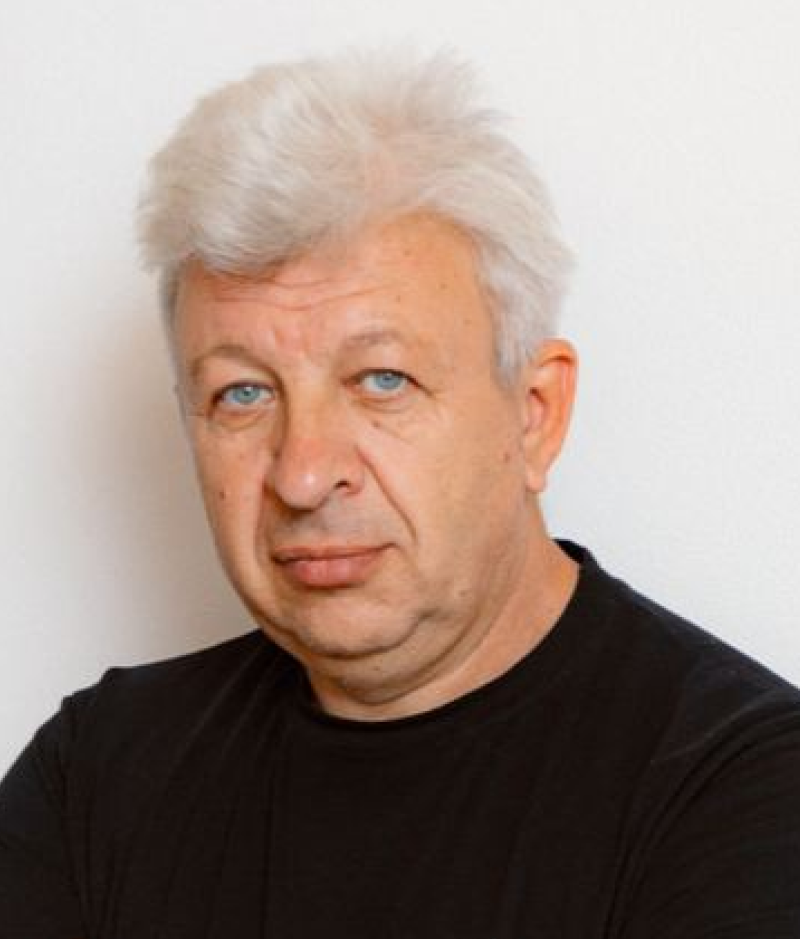
Recently, there have also been so-called university changes, when children from the occupied territories are taken to Russia for ten days. They create good conditions and give them gifts. During the programme, they invite them to propaganda rallies and concerts, involve them in the 'Movement of the First',
says Oleh Okhredko.
As part of this programme, the Russians took out over 20,000 children in 2022-2023, the analyst says.
The Almenda Centre of Civic Education helps applicants from the occupied territories to study at a Ukrainian university from afar. Graduates from the temporarily occupied territories and those who have left them are eligible for state-funded education.
In 2023, the organisation helped over 150 graduates from the temporarily occupied Crimea to enter Ukrainian higher education institutions. However, admission to Ukrainian universities has decreased over the past decade due to the difficulty of leaving the occupied territories.
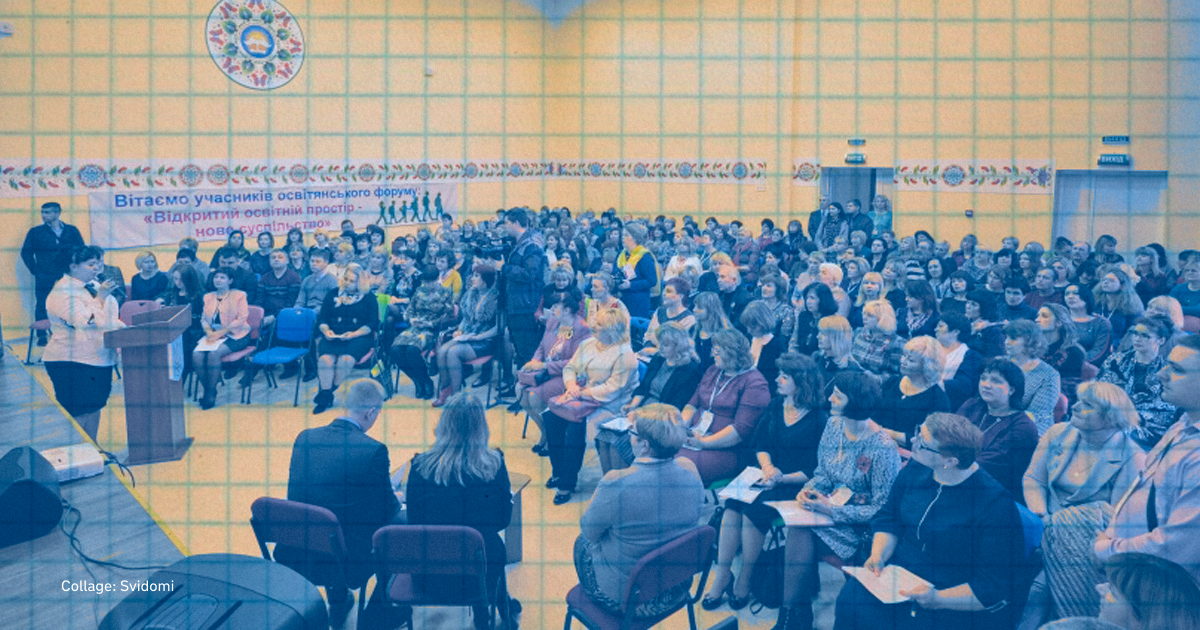
Seven years in an occupation school. The story of a schoolboy from Donetsk
Vladyslav (name changed for security reasons) was born in the Donetsk region, but in his early childhood, he moved from his parents to his relatives in Donetsk. In 2010, he started first grade and took up football. Since childhood, he supported Shakhtar (Donetsk-based football club - ed.) and dreamed of becoming a footballer and studying at Shakhtar's academy. In 2014, he was 11 years old and completing his primary education.
The boy recalls that in the spring of 2014, he was first surprised to see the symbols of the so-called 'Donetsk People's Republic' and St George's ribbons on books. He tore them off and expressed his pro-Ukrainian position. That was the first time his classmates had beaten him.
Soon, armed civilians and people in military uniforms appeared on the streets. The culmination was the agitation to support the occupation among teachers. They asked if our parents would come to the so-called referendum,
says Vlad.
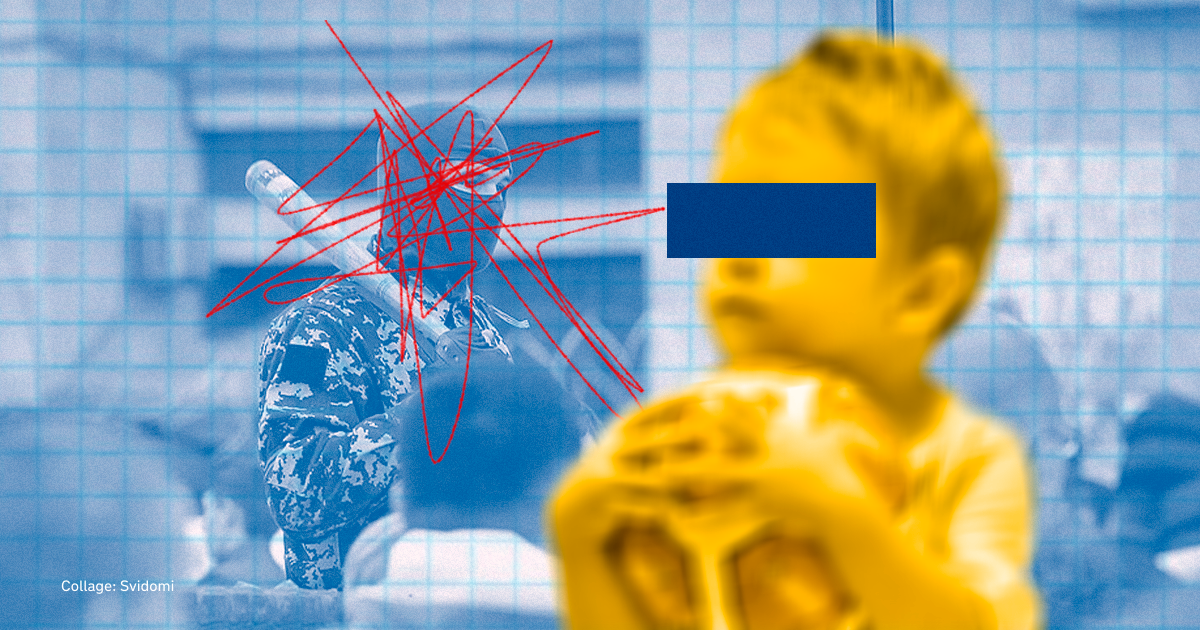
In May, political posters with the leaders of the occupation authorities were posted. However, Ukrainian symbols remained in the school. On May 27, 2014, during the battle for the Donetsk airport, Vladyslav celebrated his primary school graduation. The Ukrainian anthem was no longer played at the End of the school year сelebration. That was the last time he had received a school report with the Ukrainian coat of arms.
School did not start in September because of active hostilities near the city. We came to school in the fifth grade, and there were symbols of the illegal armed formation 'DPR'. I remember coming to the gym for a physical education lesson, and a few minutes later, something exploded, and the window glass shattered,
says Vladyslav.
According to the boy, the first change at school was a 5-point grading system, like in Russia (in the government-controlled area, the system is 12-point). Education was changed gradually: Ukrainian Language and Literature classes remained unchanged at first, but the number of hours taught decreased every year. Russian Language and Literature replaced them.
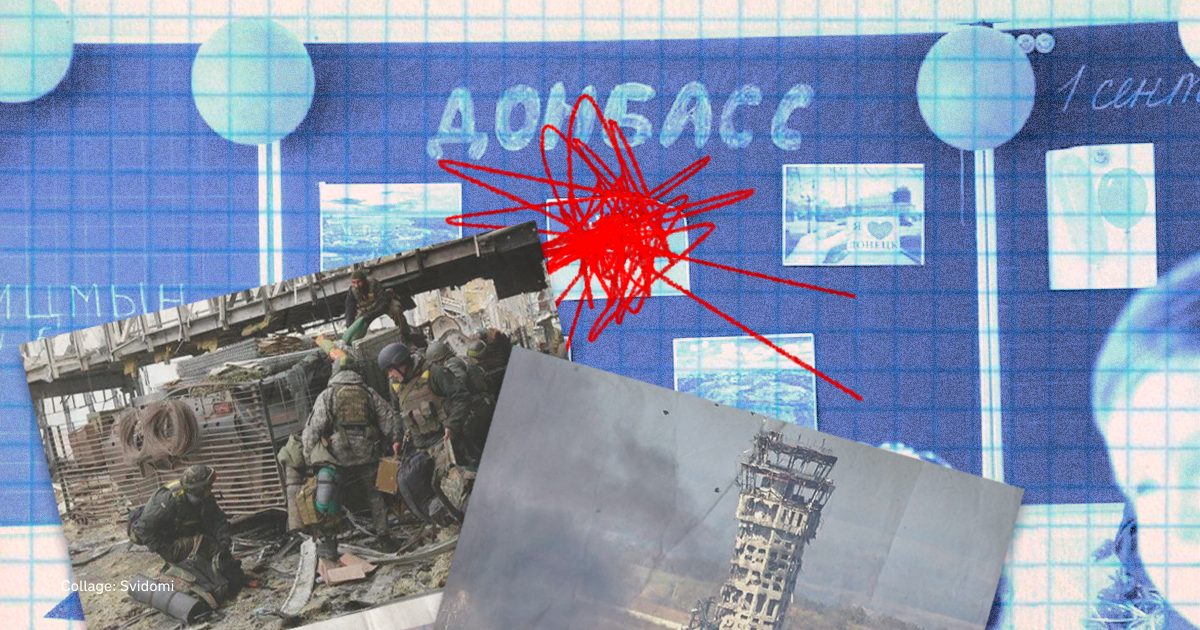
In 2018, when Denis Pushilin (a representative of the United Russia political party - ed.) came to the occupation authorities, there appeared a new subject called Lessons of Сivic And Spirituality in Donbas (a prototype of the Russian subject Talk about Important Things – ed.) Twice a week, these lessons taught about the Second World War and the so-called heroes of the DPR. Two subjects in history were taught: World History and Russian History.
The boy drew the Ukrainian coat of arms and wrote 'Glory to Ukraine' in his books. For this, he was summoned to the principal's office with his parents and warned not to do it again, yet he received no punishment.
In 2021, in the eleventh grade, Vlad did not prepare for the exams at his school but did assignments in a Ukrainian class to graduate as an external student. He was preparing for the Ukrainian External Independent Evaluation, not the Unified Republican Examination (URE) (a prototype of the Russian Unified State Examination – ed.).
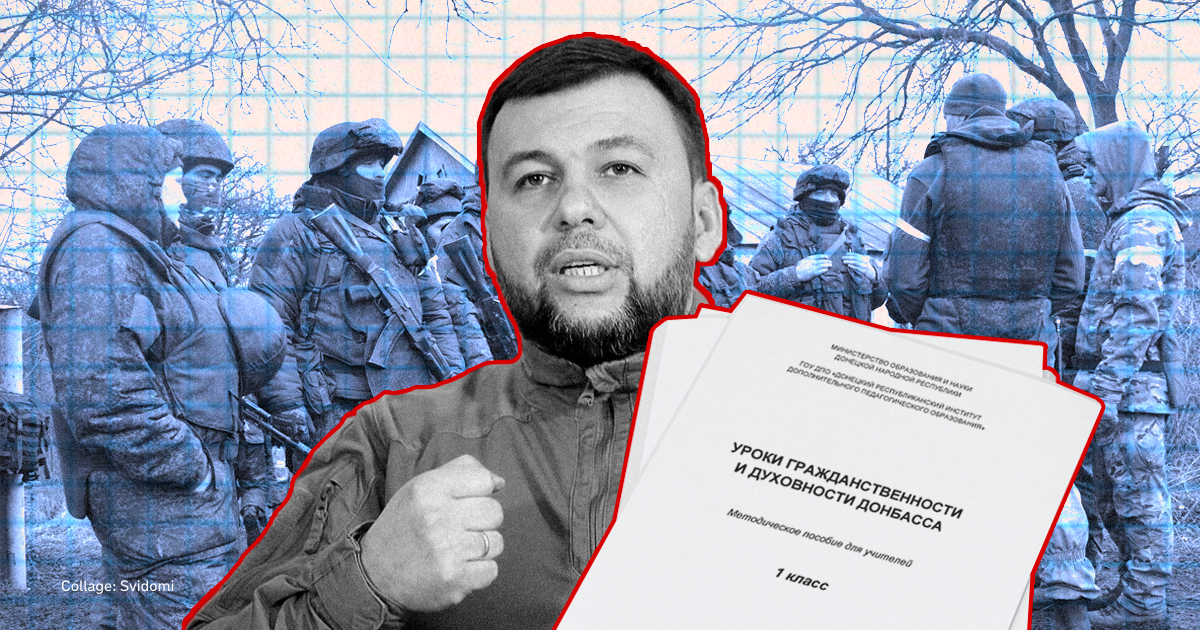
"My relatives, who were in the government-controlled area, suggested that I finish a Ukrainian school and then go to university in the government-controlled area," Vladyslav recalls.
One of the motivations to leave was control from the so-called military registration and enlistment offices in Donetsk, where boys had to register at 16. Vladyslav managed to avoid this because he did not bring his documents. There was also active campaigning for high school students to obtain a passport of the Russian Federation and the so-called 'Donetsk People's Republic'.
You couldn't get a certificate without a passport. You could only go outside with your documents; if they were Ukrainian, you could be interrogated. I was avoiding getting a passport, so leaving was the only way to avoid it in the future,
he says.
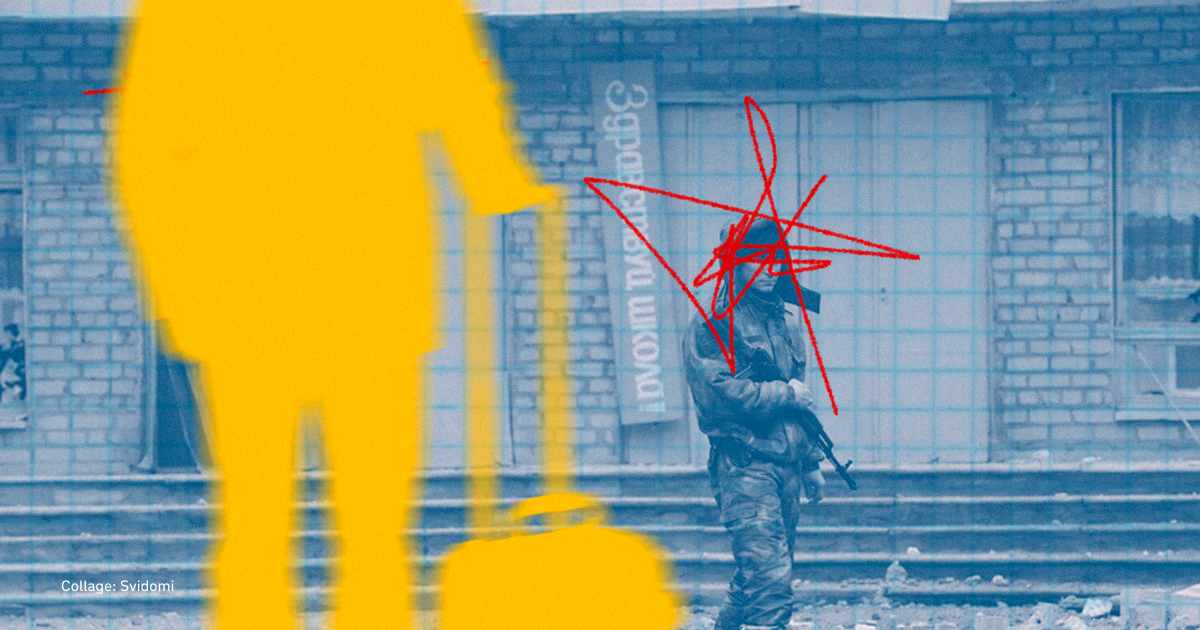
In May 2021, Vlad left Donetsk and entered a university in the government-controlled area. However, most of his family is still in the occupied territories. Today, he lives in the south of Ukraine, where he studies and works.
During the war, Ukrainians are experiencing something that Europe has not seen since the Second World War. The reality of the occupation is more terrible than its depiction on TV. Education and life under occupation is a terrible experience. I want people abroad to understand that supporting Ukraine and its goal to regain the occupied territories is important. We cannot give away the land because Ukrainians live there and suffer from the Russian regime,
says Vladyslav.
He also addresses people under occupation: "Know that you are not alone! Many people are going through a similar fate. Do not lose faith in Ukraine despite all the challenges. If my faith had died during the seven years of occupation, I would have been mobilised into the Russian army, but I did not lose it. I fought and looked for ways. If you have the opportunity to leave, do it."

